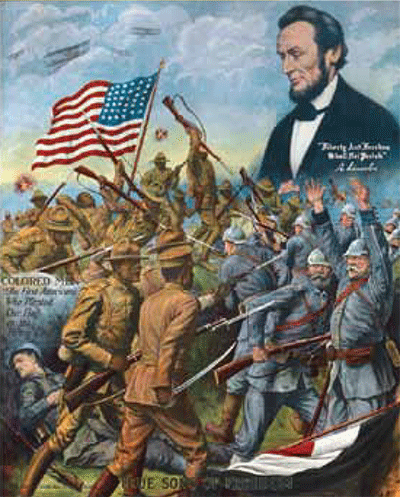baths and the disastrous effects of the war. Many also showed air combat and infantry in action to make the people understand that war wasn't as glorious as they thought it was.
This change in artistic techniques and themes came about by the concept of 'change'. This concept was an important aspect of all social events during the World War II. Change in women's roles, change in racial problems, change in everything. Artists decided that this was a new era, and that they could not create art that was influenced by traditional renaissance techniques.
Art was a form of imagination, which can be influenced by social change around you. The art changed in many forms.
 |
| Pablo Picasso's 'Guernica' |
Art became more diverse. Instead of traditional paintings and drawings, artists made collages and models. This type of art was influenced by the resources around them. Because many goods were rationed, the artists used what they could get. Jackson Pollock, an abstract artist, began this new style of 'drip and splash'. Instead of using a traditional paintbrush method, he would drip the paint from the can onto the canvas, and then later uses knives and sticks to give it depth. This new form of abstract art portrayed a moving picture of the war in some cases.
 |
| Jackson Pollock's 'Lavender Mist' |
Another form of art that prevailed heavily during the war was propaganda. This form of art was mainly made for people to help the war effort and to create hatred among the Americans, against the Nazis and Japanese. There were different kinds of propaganda that appealed to different groups of people also.



Excellent post, it is clear you spent a lot of time on it! I like how you start off with how art has adapted to reflect war themes, and end with a transition from paintings of war to propaganda. Do you believe that the artists responsible for making propaganda believed that they were doing the right thing, even if it portrayed US enemies negatively?
ReplyDeleteFor more information on propaganda during WWII:
http://www.history.com/topics/world-war-ii/world-war-ii-history/pictures/world-war-ii-posters/recruitment-poster-by-tom-woodburn
Interesting ! Art has changed its form in WWII indeed. I like how you explain each form of art and how it evolved the techniques and influences it had. I really like also how you give examples of the artist and an image on how there art is portrayed. How was the Axis type of art different from those of the Americans? How was the propaganda different? How did the Axis protray America to be?
ReplyDeleteVery unique post. I know we talk a lot about the war aspects of WWII, but never about the artwork behind it. I feel like the artwork during WWII is very important in portraying the feeling and emotion of the people (common people) during the war. Like Sohail mentioned, propaganda may be a reason much of the artwork which was created was created. In addition, some of the abstract paintings show that the war was a tough time for all those on the battlefield and those who are at home working from home.
ReplyDeletePerhaps the best way to learn about race relations is to look at art. I did some more research and found that art theft and looting was at an all time high during world war ii. In countries such as Germany, countless pieces of art were stolen and destroyed during the holocaust, as a way to destroy the Jewish culture entirely. Though Americans were not destructive with art, their art was very destructive to the morale of certain racial groups.
ReplyDelete